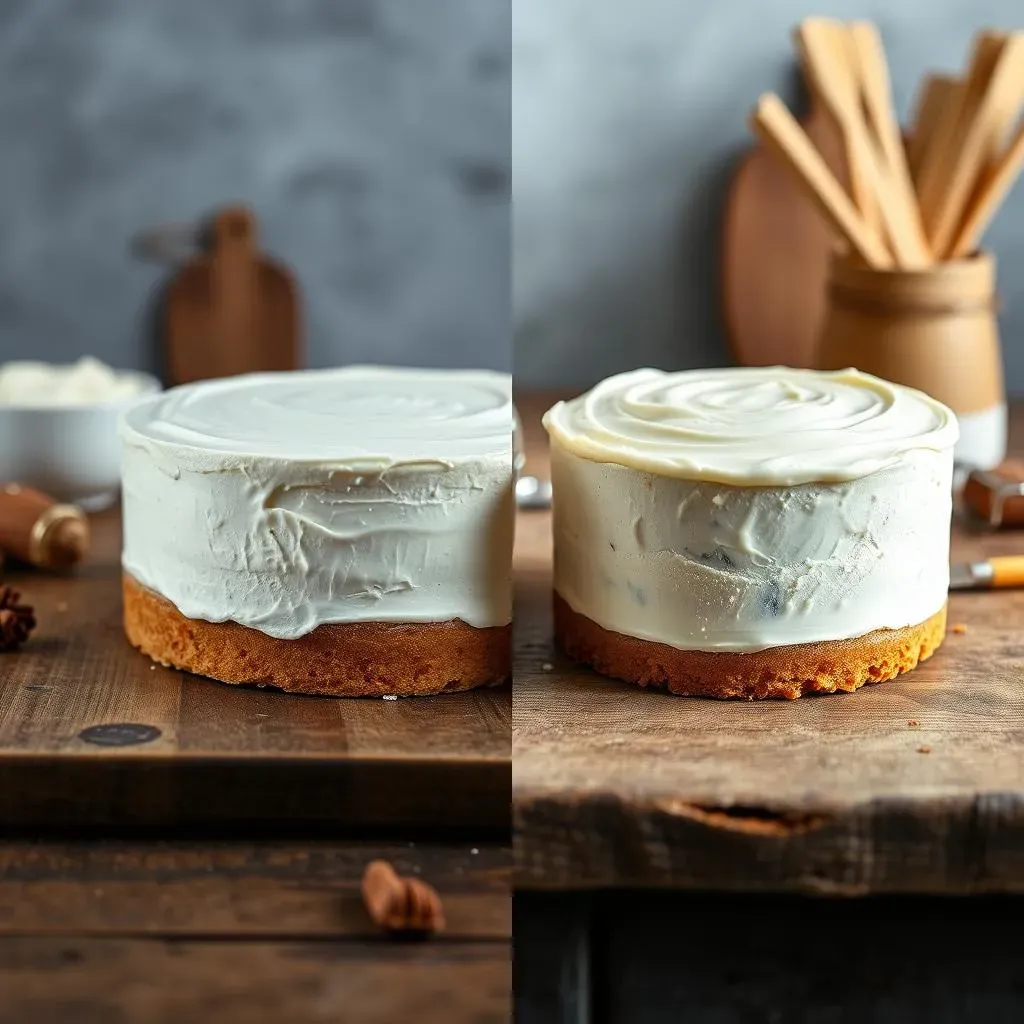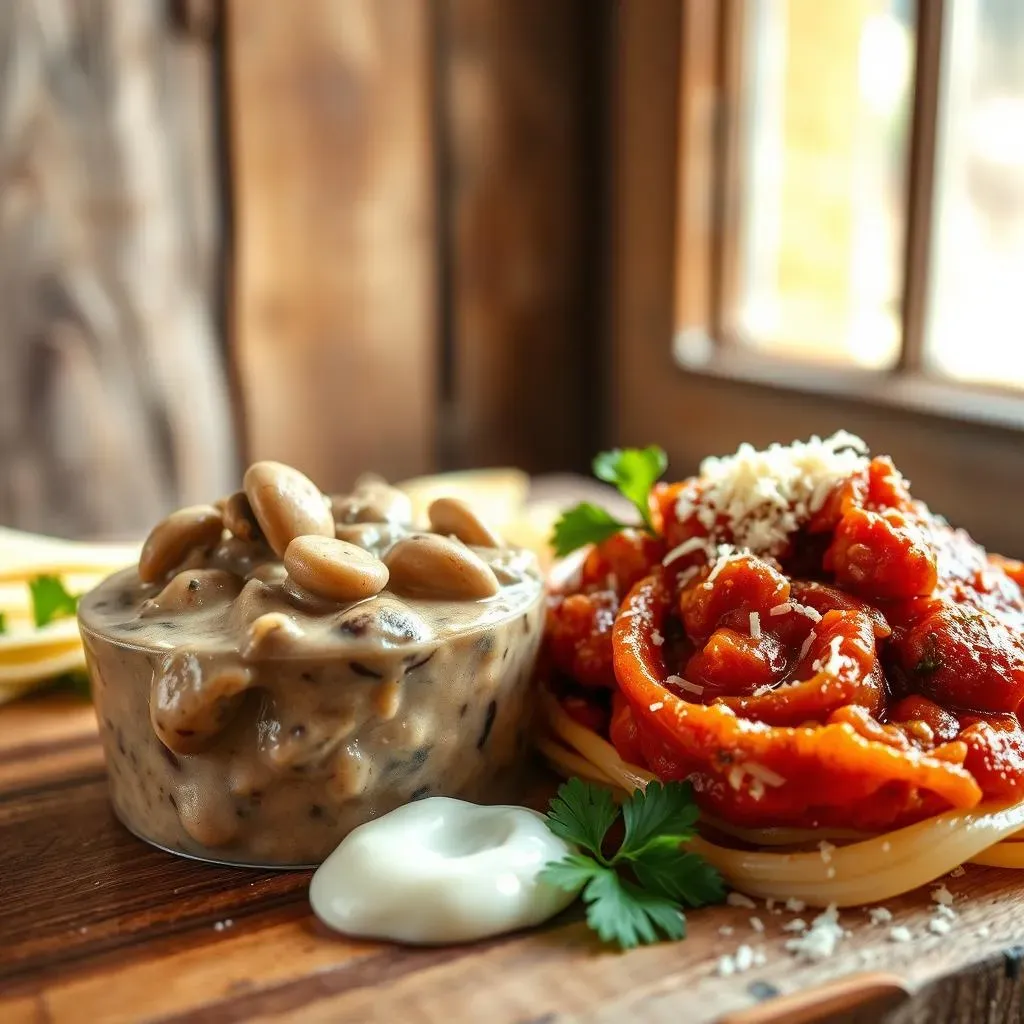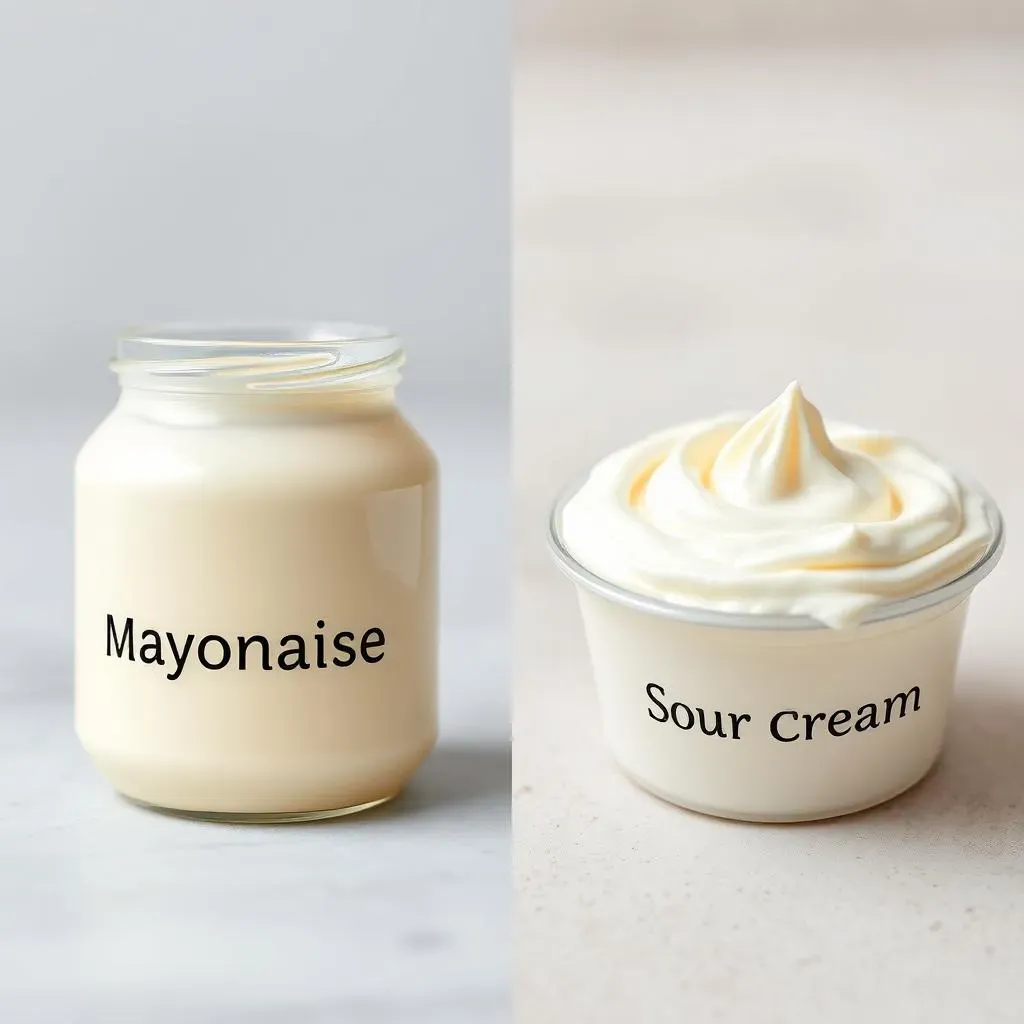Table of Contents
Ever stared blankly at a recipe, realizing you're missing a key ingredient – sour cream? Don't panic! We're diving into the burning question: can you substitute mayonnaise for sour cream? This isn't just a simple yes or no answer. The success of this swap depends heavily on the recipe itself. This comprehensive guide explores the nuances of using mayonnaise as a sour cream substitute. We’ll examine the impact of this substitution in both sweet and savory applications, exploring the differences in taste, texture, and overall culinary results. We'll also analyze the chemical makeup of both ingredients to understand why this substitution sometimes works wonders and other times falls flat. Get ready to unlock a world of culinary flexibility and discover creative alternatives when your fridge isn't cooperating. Let’s tackle this common cooking dilemma head-on and find out if mayonnaise can truly step up to the plate (or bowl!) in place of sour cream.
Can You Substitute Mayonnaise for Sour Cream in Baking?

Can You Substitute Mayonnaise for Sour Cream in Baking?
So, you're wondering if you can swap mayonnaise for sour cream in your baking endeavors? It's a surprisingly common question, and the answer, as with most culinary substitutions, is a nuanced "maybe." Mayonnaise, with its emulsified oil and egg yolks, brings moisture and richness to baked goods. Sour cream, on the other hand, contributes both moisture and tang, thanks to its lactic acid. Therefore, the success of a mayonnaise substitution hinges on the recipe's specific needs. In cakes and muffins, where moisture is key, mayonnaise can often work well, providing a tender crumb. However, you'll lose that characteristic sour cream tang. The result might be a slightly sweeter, richer cake, but not an exact replica of the original recipe.
Recipe Type | Mayonnaise Substitution Outcome | Considerations |
|---|---|---|
Cakes (e.g., pound cake) | Generally successful; adds moisture and richness. | May result in a less tangy, sweeter cake. |
Muffins | Can work well; adds moisture. | Flavor profile will be different; consider adding lemon juice for acidity. |
Cookies | Generally not recommended; may result in overly oily cookies. | The high fat content in mayonnaise can negatively impact texture. |
Think of it this way: mayonnaise acts more like an oil-based moisturizer, while sour cream offers both moisture and a sharp bite. In recipes that rely heavily on the tang of sour cream, like some cheesecakes or coffee cakes, using mayonnaise will dramatically alter the flavor profile. You'll end up with a dessert that is noticeably less acidic and potentially overly rich. The texture might also be affected; mayonnaise can sometimes result in a denser, less airy final product.
- Always start with a small substitution test to gauge the impact on your recipe.
- Consider adding a touch of lemon juice or vinegar to compensate for the lack of acidity in mayonnaise.
- If the recipe calls for a significant amount of sour cream, a complete substitution with mayonnaise is unlikely to yield a satisfactory result.
Mayonnaise as a Sour Cream Substitute in Savory Dishes: A Taste Test

Mayonnaise as a Sour Cream Substitute in Savory Dishes: A Taste Test
Mayonnaise in Creamy Sauces: A Surprisingly Good Swap?
Let's talk savory dishes. Mayonnaise, believe it or not, can sometimes be a decent stand-in for sour cream in creamy sauces. Think of dishes like creamy mushroom sauce or a simple pasta sauce. The richness of the mayonnaise can lend a similar creaminess to the sauce, but the tang and slight acidity of sour cream will be missing. To compensate, a squeeze of lemon juice or a dash of white wine vinegar can help mimic that sour cream tang. The key is to use mayonnaise sparingly, as too much can make the sauce overly rich and heavy. Remember, this substitution works best in sauces where the sour cream is primarily for creaminess, not a dominant flavor.
Dish | Mayonnaise Substitution Success | Tips |
|---|---|---|
Creamy Mushroom Sauce | Moderately successful; adds richness. | Add lemon juice for acidity; use sparingly. |
Pasta Sauce (Creamy) | Can work; adds creaminess. | Consider adding herbs and spices to enhance flavor. |
Dips (e.g., Spinach Artichoke Dip) | Generally not recommended; texture and flavor differ significantly. | Use a different substitute like Greek yogurt or cream cheese. |
The Case of the Creamy Potato Topping: A Risky Venture
Now, let's consider dishes where sour cream plays a more significant role in both flavor and texture. Take, for example, a creamy potato topping for baked potatoes or casseroles. In this case, the mayonnaise substitution is riskier. While the mayonnaise might add richness, it'll lack the tang and slightly thinner consistency of sour cream. The result could be a heavy, overly rich topping that doesn't complement the potatoes as well. The texture might also be off; mayonnaise is typically smoother than sour cream, leading to a less desirable final product. For potato dishes, sticking with traditional sour cream or exploring alternatives like Greek yogurt might be a wiser choice.
- Taste test your sauce frequently to adjust seasoning and consistency.
- Don't be afraid to experiment with different ratios of mayonnaise to other ingredients.
- Consider using a combination of mayonnaise and another substitute for the best results.
Beyond the Basics: Thinking Outside the Jar
While mayonnaise can sometimes fill in for sour cream in savory dishes, it's crucial to remember that it's not a perfect substitute. The flavor profiles are quite different, and the texture can also vary significantly. The best approach is often to understand the role sour cream plays in the recipe. If it's mainly for creaminess, a small amount of mayonnaise might work. But if the sour cream contributes a significant tang or specific texture, it's best to explore other alternatives like Greek yogurt, crème fraîche, or even a combination of buttermilk and cream cheese. Experimentation and understanding the recipe's needs are key to successful substitutions.
Understanding the Differences: Mayonnaise vs. Sour Cream

Understanding the Differences: Mayonnaise vs. Sour Cream
Before we delve deeper into substitutions, let's get a clear understanding of the key differences between mayonnaise and sour cream. This isn't just about taste; it's about their fundamental composition. Mayonnaise is an emulsion of oil, egg yolks, and an acid (usually vinegar or lemon juice). The egg yolks act as an emulsifier, binding the oil and acid together to create that creamy texture. Sour cream, on the other hand, is a cultured dairy product. It's made by fermenting cream with bacteria, which produces lactic acid, giving it that characteristic tangy flavor. This fermentation process also alters the cream's texture, making it thicker and slightly more acidic than simple cream.
Characteristic | Mayonnaise | Sour Cream |
|---|---|---|
Base | Oil, egg yolks, acid | Cultured cream |
Flavor | Mildly tangy (depending on acid used), rich, creamy | Tangy, slightly acidic, creamy |
Texture | Smooth, emulsified | Thicker, slightly less smooth than mayonnaise |
Acidity | Variable, depending on the acid used | Higher acidity due to fermentation |
Understanding these differences is crucial when considering substitutions. The high fat content in mayonnaise, primarily from oil, contributes significantly to its richness and creaminess. This richness can be desirable in certain dishes, but it can also make a recipe overly heavy or greasy. Sour cream's tanginess, thanks to lactic acid, is another key factor. This bright, acidic note balances the richness of the cream and adds a distinct flavor profile to recipes. Mayonnaise, lacking this significant acidity, will often result in a blander or sweeter final product, depending on the recipe.
- Mayonnaise’s richness comes from oil; sour cream’s from cultured cream.
- Sour cream possesses a distinct tang from lactic acid; mayonnaise does not.
- Consider the recipe's desired flavor profile and texture before substituting.
Creative Alternatives: Beyond Mayonnaise and Sour Cream

Creative Alternatives: Beyond Mayonnaise and Sour Cream
Greek Yogurt: A Tangy and Healthy Swap
Let's face it, mayonnaise isn't always the healthiest option. If you're looking for a healthier alternative to sour cream, Greek yogurt is a fantastic choice. It's thicker than regular yogurt, offering a similar creamy texture to sour cream. The tanginess is also quite comparable, making it a suitable substitute in many recipes. In baking, Greek yogurt can add moisture and a subtle tang, while in savory dishes, it can create a creamy sauce or dip. Just be aware that the flavor might be slightly different, so taste as you go and adjust seasonings accordingly. For a richer flavor, you can use full-fat Greek yogurt. For a lighter option, opt for low-fat or non-fat.
Recipe Type | Greek Yogurt Substitution Outcome | Considerations |
|---|---|---|
Cakes | Adds moisture and a subtle tang. | May result in a slightly less sweet cake. |
Savory sauces | Creates a creamy texture and mild tang. | Adjust seasonings to compensate for the different flavor profile. |
Dips | Works well; adds creaminess and tang. | Consider adding herbs and spices for extra flavor. |
Beyond Dairy: Vegan and Dairy-Free Options
What if you're dairy-free or simply want to explore other options? There are several excellent vegan alternatives to sour cream that can deliver a similar creaminess and even a comparable tang. Cashew cream, made by blending soaked cashews with water and a touch of lemon juice or vinegar, is incredibly versatile. It has a rich, creamy texture and can be easily adjusted for sweetness or tanginess. Another option is silken tofu, which, when blended with lemon juice and a little water, creates a surprisingly good sour cream substitute, especially in savory dishes. These vegan options require a little more preparation, but the results can be surprisingly delicious and satisfying.
- Cashew cream: Blend soaked cashews with water and lemon juice for a rich, creamy texture.
- Silken tofu: Blend with lemon juice and water for a surprisingly good sour cream substitute in savory dishes.
- Coconut cream (full-fat): Adds richness and creaminess, but has a distinct coconut flavor.